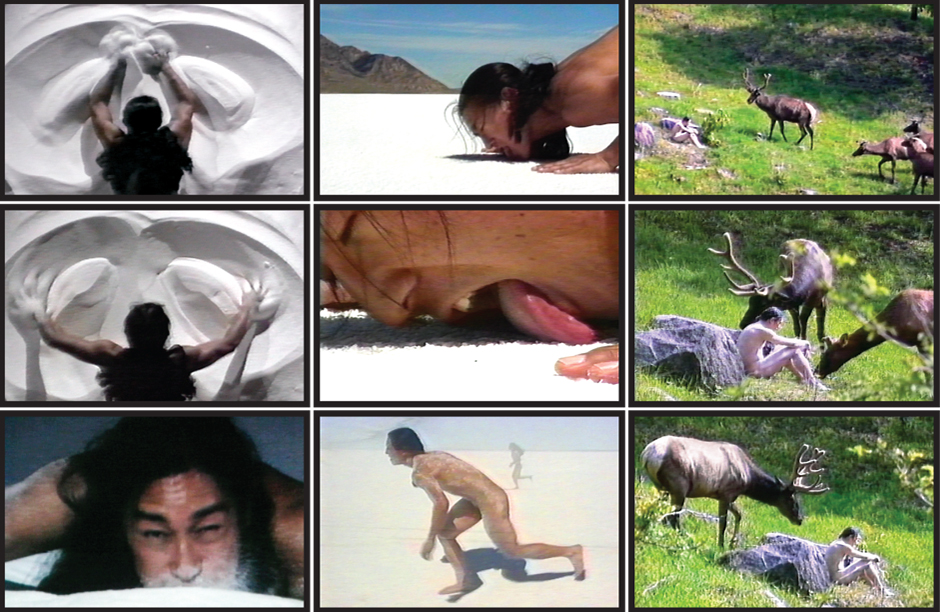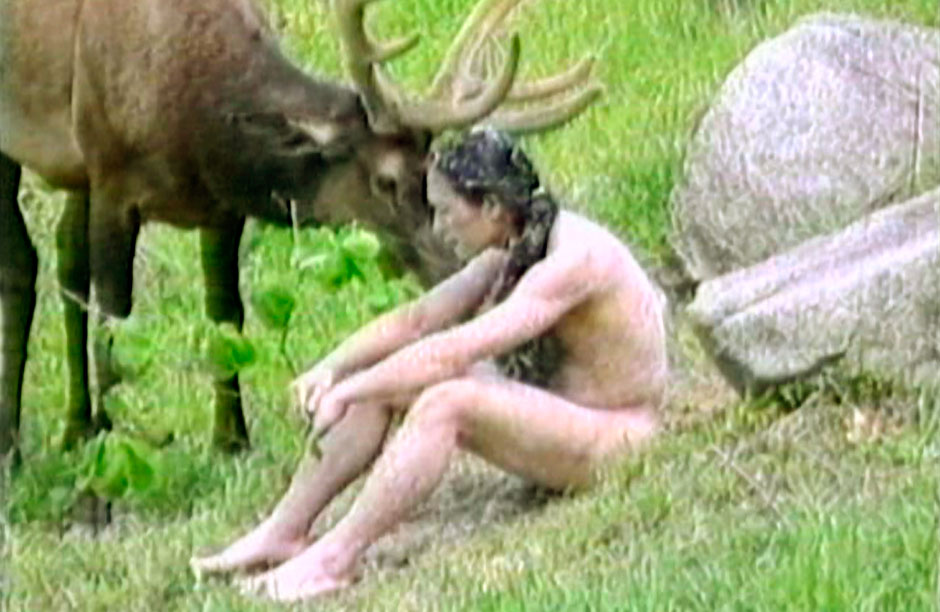PAST ISSUES
 Video stills from "Salt Transfer Cycle, 1993-1995, an 8-minute video piece by artist Michael Joo. Photos courtesy of the artist.
Video stills from "Salt Transfer Cycle, 1993-1995, an 8-minute video piece by artist Michael Joo. Photos courtesy of the artist. Video still from "Salt Transfer Cycle, 1993-1995, an 8-minute video piece by artist Michael Joo. Photos courtesy of the artist.
Video still from "Salt Transfer Cycle, 1993-1995, an 8-minute video piece by artist Michael Joo. Photos courtesy of the artist.
Salt Transfer Cycle: A Video Piece
Each summer in the northern mountains of South Korea there is a harvest. The male elk that graze in the region shed their antlers in late winter to make way for the downy growth of a fresh set of antlers. The new antlers emerge each spring covered in a velvety layer of skin which feeds the growth of antler tissue the nutrients it needs to harden into bone — like bone marrow, but on the inside out. This nutrient-rich layer is what the harvesters are seeking. They come to cut the antlers just before they harden into the branchlike headdress that is emblematic of these majestic creatures. From the antler, and especially the antler blood, medicinal powders, tinctures, teas, and edibles have been made for more than 2,000 years.
Contemporary artist Michael Joo works from a studio in Chinatown in New York City. It is here where his conceptual video-performance piece Salt Transfer Cycle began and it is with the elk in the mountains of South Korea — his ancestral homeland — where the piece ends. But the 8-minute video continues on loop — there is no end. The visual performance is symbolic of a perpetual cycle.
In the artist’s own words, “It involves three performed actions that chronicle the transformation of an idea or dream (of salt as the physical by-product of sweat or energy) into reality.” The video centers around the symbol of salt and presents three distinct segments filmed in three different locations. The artist appears in each segment as the protagonist and the conduit.
In the first segment of the video, Joo begins in a pool of 2,000 pounds of monosodium glutamate (MSG) rising like a sand dune in the center of his Chinatown studio. Joo is filmed moving through the salt on his belly, swimming and undulating through it in the rhythmic repetition of a breast stroke. Just as sweat is the measure of physical labor, the salt becomes the measure for the intangible process of conceptualizing art — a symbol for the “dream.” The MSG plays on Asian-American stereotypes, which Joo literally dives right into.
The second segment is filmed in the Great Salt Lake Desert in Utah at the site of the US land-speed trials. Here Joo picks up where he left off in his studio — flat on his belly. The salt of the desert soon begins to cover the surface of his body, sticking to his skin as it breaks into a sweat under the unfettered heat of the desert sun. In this segment Joo embodies a dance of evolution: transforming from the fishlike form he was in the opening segment of the video into a crawling, licking four-legged creature, to a bipedal humanoid and finally into machine — taking off along the flats running at full speed as if he too were being tested for performance.
In the third and final segment of the video Joo — his skin still white from the desert — wanders like an apparition into the dense green forest of the northern mountains in South Korea. He’s alien, elfin, dreamlike as he moves silently among the grazing elk to a resting spot near a rock that echoes the shape of his form.
Joo becomes part of the landscape; part of nature. In time the elk eventually take interest in the motionless form sitting against the rock. Joo has carried the salt — the sweat of his dream and his labor; of evolution and transformation — wearing it now as an offering on the surface of his skin. An elk finally moves in close, tilts its head to Joo’s glistening body and takes a lick.
In the last undocumented segment, when the harvesters finally come to cut the antlers from the elk that ingested Joo’s salt into his own body, the salt will move further still through the man seeking the medicine.
